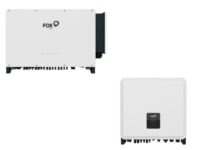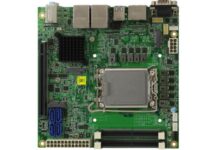- 75F Smart Purge: This application profile works in pre- and post-occupancy settings and fully adheres to ISHRAE, ASHRAE recommendations to prevent re-circulation of air and to purge the air before and after occupancy.
- 75F Smart Enhanced Ventilation: This profile ensures the indoor environment remains as safe as possible during a building’s occupied period and reduces risk of infection from aerosolized particle.
Q1. What is the science behind these guidelines?
The COVID-19 virus spreads primarily through droplets of saliva or discharge from the nose when an infected person coughs or sneezes. Talking and breathing can also release droplets and particles. Droplets generally fall to the ground or other surfaces in about 1 m (3 ft), while particles (aka aerosols), behave more like a gas and can travel through the air for longer distances, where they can transmit to people and also settle on surfaces.
The virus can be picked up by hands that touch contaminated surfaces (called fomite transmission) or be re-entrained into the air when disturbed on surfaces.
SARS infected people over long distances in 2003, SARS-CoV-2 has been detected as an aerosol in hospitals, and there is evidence that at least some strains of it remain suspended and infectious for 3 hours, suggesting the possibility of aerosol transmission.
This suggests that people exposed to infectious particles in a closed environment like offices where air is recycled could be at considerable risk of exposure. The guidelines ensure that the air is constantly purged and ventilation rates are increased to ensure occupants are not breathing in infectious particles that could be circulated via the HVAC system.
Q2. Why are commercial buildings at a high risk for viral build-up and exposure?
People spend a large amount of their daily life in the confines of the commercial buildings where shared spaces and high interaction with shared surfaces increases the number of microbes on surfaces and in the air.
In other words, many of the high-touch areas in commercial buildings could be vectors for the spread of virus. And the more people that touch them, the higher the risk of contamination. Researchers found that places such as refrigerators, drawer handles, faucet handles, push-out exit doors and coffee pots tend to have the highest concentrations of germs.
While the above risk can be minimised by regular sanitisation and cleaning of all surfaces, the other risk is that of transmission via contaminated air. The circulated air of commercial buildings can contribute to the spread of microbes. In indoor environments, microbial life is circulated through the air vents and within HVAC systems.
Maintenance of systems and filtration has an impact on how contaminants flow through the air, so buildings that have not been properly serviced to maintain appropriate circulation, filtration, humidity and temperatures can contribute to higher amounts of microorganisms moving through the systems. There is renewed emphasis on controlling indoor air quality and better ventilation and this could greatly reduce the chances of viral transmission indoors.
Organisations like The Centres for Disease Control and Prevention (CDC) and the American Society for Heating, Refrigerating, and Air-conditioning Engineers (ASHRAE) have released new guidelines for offices and recommend opening outdoor air (OA) dampers as high as 100 percent, keeping systems running longer hours, and disabling demand-control ventilation (DCV). ASHRAE also recommends a two-hour purge of indoor air before and after occupancy.
Q3. What are the services that new clients are looking for these days and why?
Beyond a short Return on investment, plus ongoing energy savings, clients prefer smart building infrastructure as it improves quality of life for both owners and tenants by enhanced monitoring, measurement and control capabilities of equipment and indoor environments.
With building automation, facility managers can analyse and improve efficiency, pre-empt costly failure or service with pre-emptive monitoring, and maximize investment of time and money across equipment and staff, freeing up people’s time to focus on higher-value priorities. With the current scenario of most people working from home, the ability to remotely control, monitor and manage multiple facilities has become more of a necessity than a luxury. Many companies are looking to incorporate remote management to ensure that teams can work from the safety of homes while ensuring all systems are up and running.
Perhaps the greatest value realized (and least measured) for clients, is that of providing a welcoming, comfortable, healthy environment with temperatures, air quality and lighting to maximize occupant productivity and well-being. The true value of healthy buildings is just beginning to come to light with the advancing WELL Building standard and other human factor assessments.
While sustainable buildings were once considered luxuries, they will be a must-have and widely beneficial choice for any building owner. The quick payback (further accelerated by incentives) and the ongoing energy savings potential from smart HVAC and lighting systems are significant. When combined with the quality of intelligent building and business management, and healthy, productive occupants, smart sustainable buildings are the clear choice of the future.
Q4. How can smart building technology help combat COVID 19 and other such airborne viruses and how is 75F playing its part in helping buildings do so?
By implementing the latest guidelines which ensure infectious particles are purged at regular intervals from the indoor environment, Smart BAS systems can ensure the chances of viral transmission within offices can be significantly reduced.
Current recommendations for the commercial built environment include increasing outside air ventilation and flushing indoor air before and after occupancy hours. 75F Epidemic Mode achieves these directives through its specific application profiles, Smart Purge and Smart Enhanced Ventilation. Both profiles are ready to use out of the box – no manual programming required.
Where implementing CDC and ASHRAEguidelines without help from a BAS may damage equipment, 75F Epidemic Mode works to the extent possible for each individual piece of HVAC equipment based on its unique capacity and weather conditions.
This way, building owners can rest easy knowing their HVAC system is working within proper health guidelines without risk of equipment damage from running a system outside parameters.
Q5. What are the sectors where building automation demand has increased in the last 6 months?
Sectors where building automation demand has increased in the last 6 months are Retail, Hospitality, Pharma and Coworking Spaces.
Q6. What are you expecting for the year 2021?
The pandemic has emphasised that IAQ and Remote Control and Monitoring are two features that are very necessary for healthy and energy efficient offices. We hope to see a continuation of business growth we have seen since July 2020 and also expect to be adding more clients to the new sectors we have begun to serve.
75F is also hoping to reach more places in the APAC region and add more new offices in India and South-East Asia.















